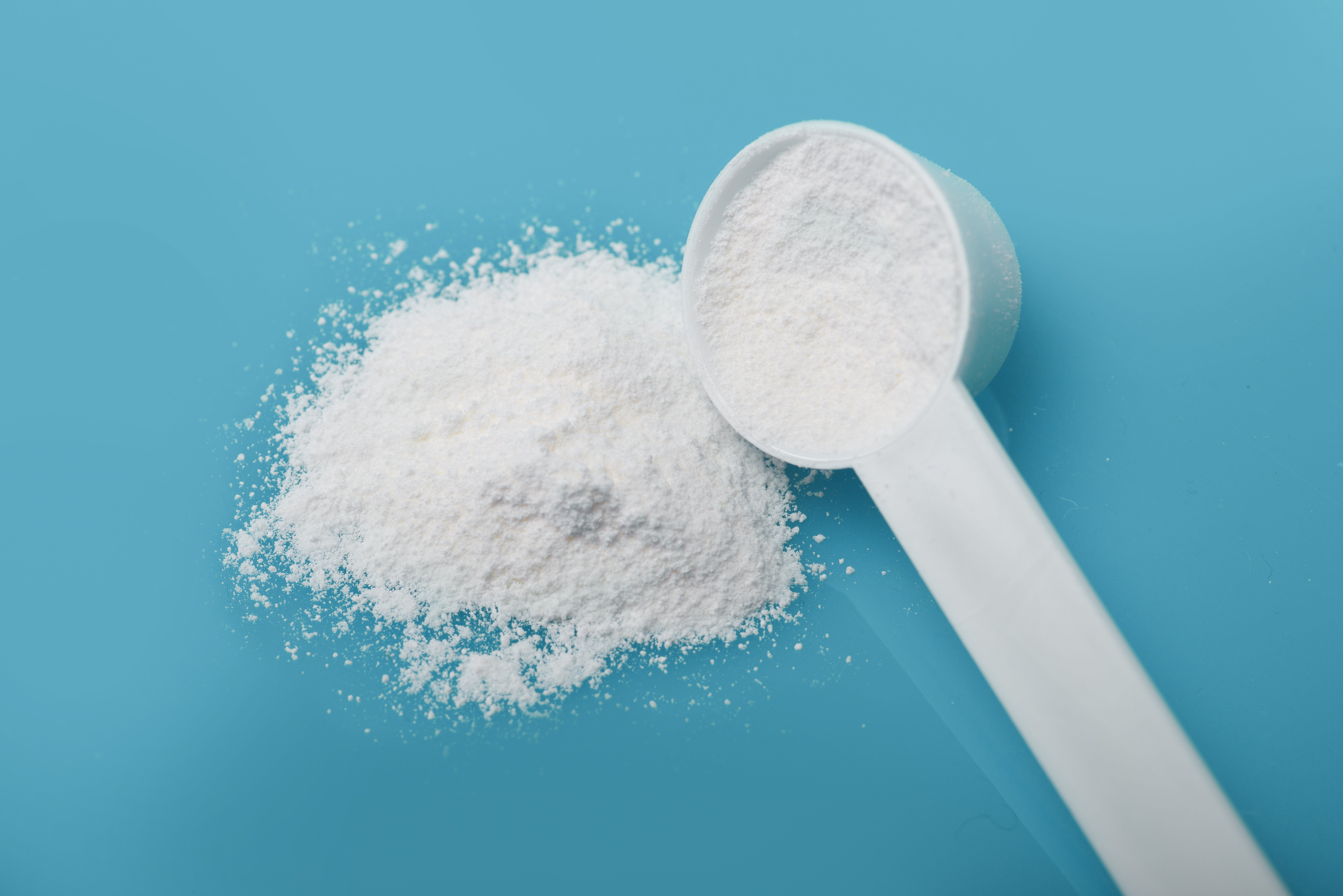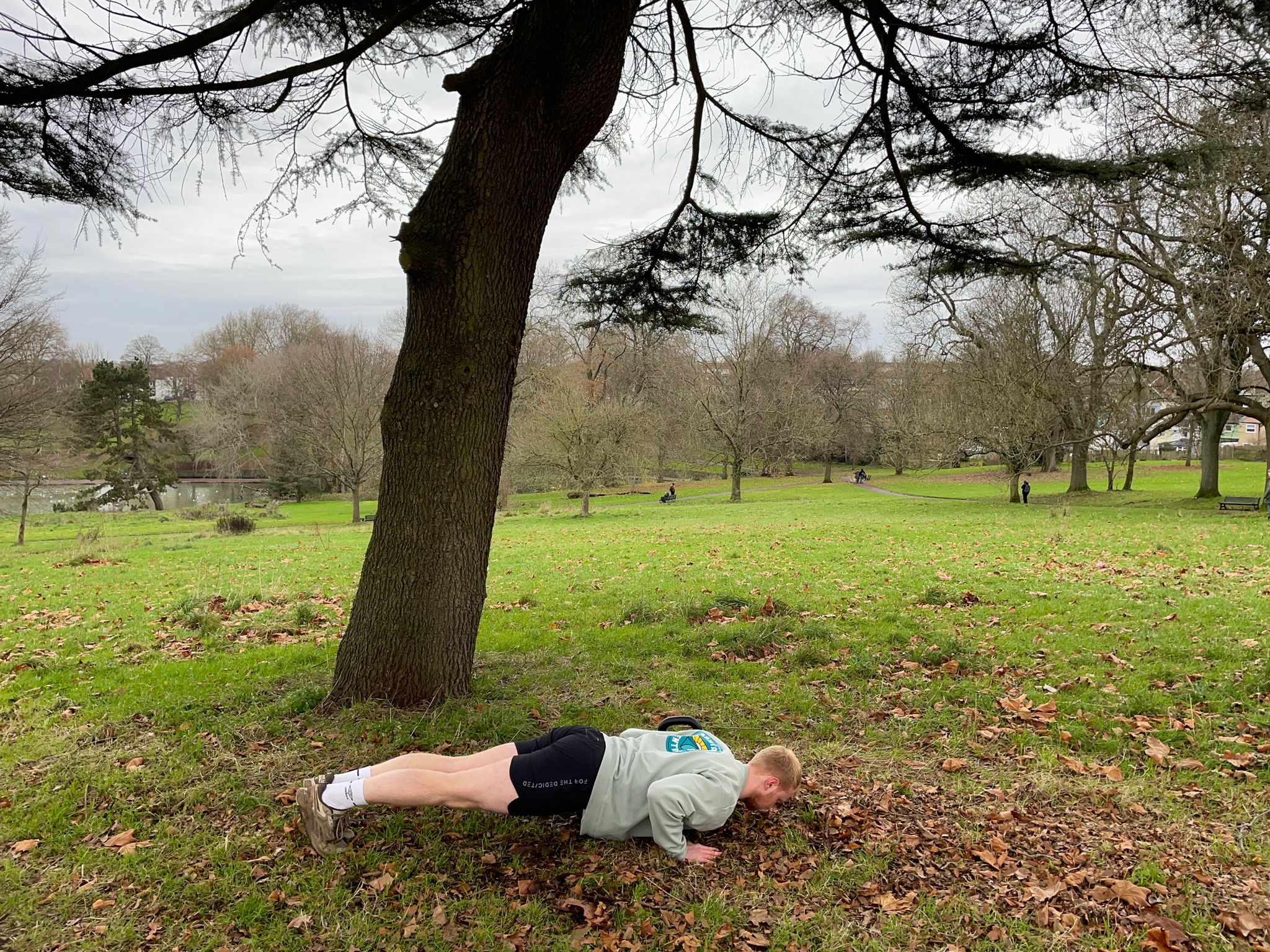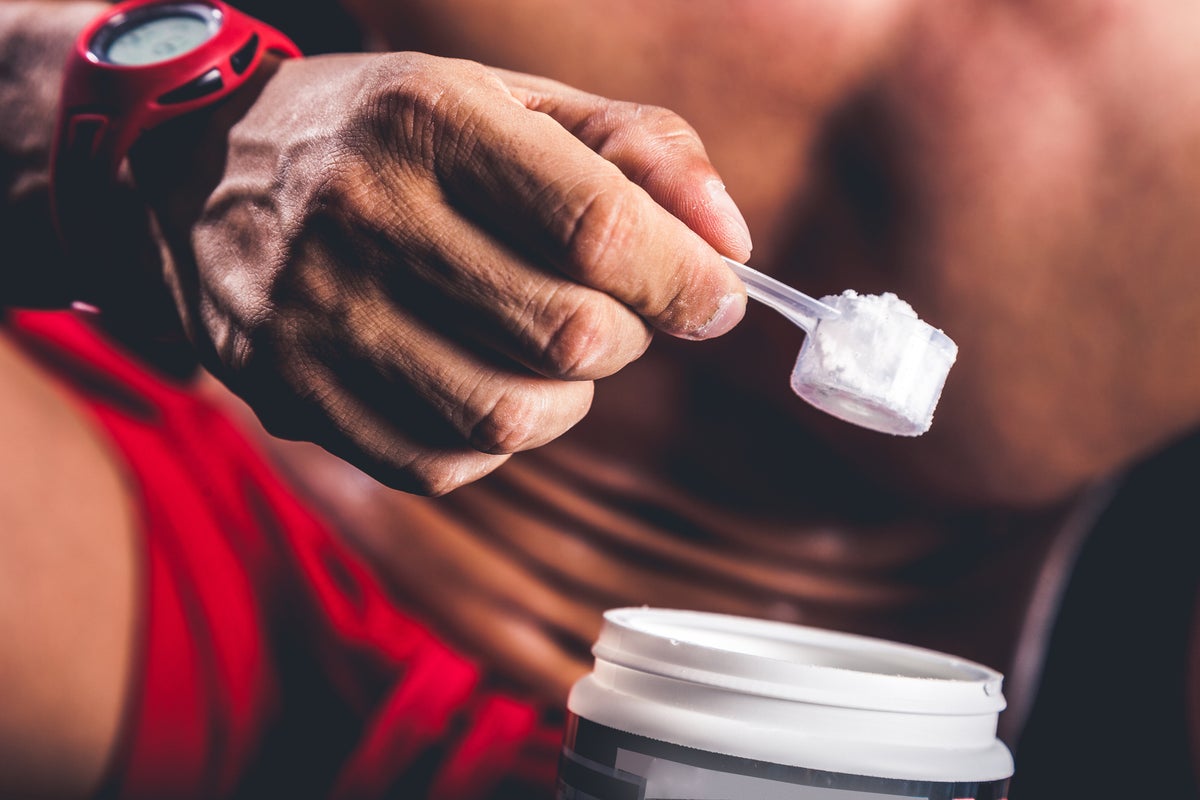If I were to recommend one supplement that would benefit the most people, it would be creatine. Paired with progressive strength training plans, using it consistently over the last five years has supported me in my bid to build strength and muscle while helping me feel more energised in my morning workouts. Add to that the fact that it’s well-researched and fairly affordable, and you have yourself a winning formula.
I started feeling the benefits after just a few weeks of using it – I felt stronger, more powerful, and my training quality in the gym amped up thanks to improved recovery between sets. In the five years since I’ve hit all-time PBs across the big three lifts and seen my scores improve across most CrossFit (my go-to training style) benchmark workouts.
Of course, creatine is only a small part of this puzzle: consistent and progressive training, an appropriate diet and ample recovery are the cornerstones of improved performance. But I believe this supplement has acted as a catalyst as I gradually climb my way towards various fitness goals.
What is creatine?
Creatine is one of the most popular supplements on the market. And with the potential to improve athletic performance, it’s easy to see why. But what actually is it?
“Creatine is a compound naturally synthesised in the body from the amino acids glycine, methionine and arginine,” explains Dr Eric Helms, a senior research fellow and expert in applied sports science at the Sports Performance Institute New Zealand.
“It plays a key role in the phosphocreatine energy system, which supports the first 10–20 seconds of high-intensity activity. Supplementing with creatine monohydrate aids your ability to perform lifting and power-based activities, reliably resulting in increased muscular performance and mass if used chronically.”
Creatine supplementation can increase your phosphocreatine stores. “Inside the body, creatine is stored primarily in muscle as phosphocreatine, where it acts as a rapidly available energy reserve to help regenerate ATP (adenosine triphosphate), the ‘energy currency’ used during short, intense bursts of exercise,” adds Dr Crionna Tobin, head of science and education at Optimum Nutrition.
Read more: The best supplements to take, according to experts

What are the benefits of creatine?
“The primary benefit of creatine is an enhanced ability to perform repeated bouts of high-intensity, short-duration efforts,” says Helms. “During intense exercise like lifting or sprinting, ATP is used up very quickly. Having more phosphocreatine available allows you to replenish that ATP faster, which means you can sustain a high power output for longer.”
In the gym, this might mean you are able to squeeze out a couple of extra repetitions per set before reaching muscular failure, while on the track it could see you maintain a high sprint speed for a few more seconds.
Over months of consistent work, Helms says this improved training performance could lead to enhanced improvements in muscle mass and power.
“Research also points to emerging benefits of creatine for brain health, including cognitive support in demanding mental tasks or during periods of sleep deprivation,” Tobin adds. “However, it’s important to point out that this research is only in its infancy.”
Read more: An exercise scientist recommends simple trick to increase health benefits of walking 10,000 steps a day
Who can benefit from creatine supplementation?
Creatine supplementation won’t automatically make you fitter, and it won’t work for everyone – it may be surplus to requirements for people who already have high levels of creatine stored in their muscles thanks to factors like a high-protein diet, for example.
But when used alongside a regular exercise routine, it can have some impressive impacts for many people, myself included.
“While initially popular with bodybuilders, its use is well-supported for casual gym-goers, powerlifters, weightlifters, CrossFit athletes, and outside of the lifting world, team-sport athletes like football where repeated sprints are common,” Helms says.
“There is also a strong and growing body of evidence showing it is very effective for older adults, helping them better maintain muscle mass and function when combined with resistance training. Endurance athletes may also benefit, according to research, but primarily if their events include crucial high-power bursts, like a final sprint to the finish line.”
A 2021 review, published in the Nutrients journal, also states that the increase in intramuscular creatine observed following creatine supplementation was especially significant in vegans over omnivores, as those following a vegan diet had lower levels of creatine stores to begin with.
Read more: The health benefits of chia seeds, according to experts

How much creatine should you take?
There is a lot of research and nuance around creatine supplementation, but Helms and Tobin agree that a consistent intake of 3g per day “will fully saturate your muscle stores and provide all the muscular-specific benefits within several weeks”.
“The higher numbers you see, like 20-25g per day, refer to a short-term ‘loading phase’ of five to seven days,” Helms says. “Loading is not necessary; it simply saturates your muscles faster – in about one week versus three to four weeks with a 3g daily dose.
“Since creatine is a supplement that can be taken consistently for years or even decades without the need to cycle off, the difference of a couple of weeks to reach saturation is inconsequential for most people. Therefore, the simple, lower daily dose is the most common and practical recommendation.”
For muscular performance, Helms adds that “more is not better”, no matter what chatter you may have heard online. Once your muscles are saturated with creatine, any excess will simply be excreted by the body.
“The one area where higher doses are being explored is for cognitive effects,” he says. “The research is still emerging, but some studies suggest that higher doses, such as 20g per day, may be needed to meaningfully increase brain creatine levels, and that supplementation can potentially improve cognitive performance when sleep deprived, act to reduce risk or severity of traumatic brain injury, or help with recovery.
“However, more research is needed before we can be prescriptive for these purposes with specific doses, or be confident that higher doses are needed or beneficial.”
Read more: I tried ‘the best kettlebell workout’, and it was surprisingly simple yet effective in just 10 minutes

How has creatine helped me in my training?
The main thing I noticed when I started using creatine supplements was the increase in my strength. Despite following similar, progressive resistance training plans both before and after taking it, I found my numbers climbed more consistently in the post-creatine period. In the first year, I added 12kg to my back squat, 5kg to my bench press and 20kg to my deadlift.
Progress has slowed since then, but I’ve still been able to add extra plates to my bar on a semi-regular basis – something any long-term strength training fan will tell you is still a solid return on investment.
My experience is par for the course for gym-goers who start supplementing with creatine, according to Helms.
“If you take a daily maintenance dose, you can expect your muscle creatine stores to become fully saturated within three to four weeks,” he says. “You might notice you can complete an extra repetition on your later sets or feel slightly less fatigued between efforts.”
In my five years of using creatine, I’ve also been able to build a decent amount of muscle. This isn’t a direct impact of creatine, but it can be chalked up as a secondary effect of the supplement – it allows you to train a little bit harder for a little bit longer.
“The real benefit of creatine is the compounding effect of small improvements,” Helms explains. “Tiny enhancements in training quality, session after session, add up to meaningful progress in muscle and power over months and years.
“You might also notice a small initial increase in body mass of about 1 per cent or so. It’s important to understand this is due to increased water content inside the muscles, not fat gain, due to muscular hydration from creatine’s osmotic effect, which is part of how it aids performance and recovery.”
The sum of all these parts means I’ve been able to up my training volume and still recover from intense sessions, seeing my performance in CrossFit-style workouts improve as a result.
Read more: I tried a CrossFit Games champ’s three-move workout – it left me struggling to climb the stairs

Common creatine myths – busted by experts
‘Creatine is not safe’: “Creatine is safe when used as recommended,” says Tobin. “It is one of the most thoroughly researched sports supplements in the world. Decades of studies show that healthy adults taking the standard dose of three to five grams per day experience no harmful effects on kidney or liver function.
“Leading organisations such as the International Society of Sports Nutrition and the European Food Safety Authority consider it safe when used within recommended guidelines.”
However, she still recommends choosing trusted brands whose products have been subject to third-party testing.
‘Creatine is a steroid’: “Anabolic steroids are synthetic hormones designed to mimic testosterone and alter the body’s hormone balance,” Tobin explains. “Creatine, on the other hand, is a naturally occurring compound made from amino acids – arginine, glycine and methionine – that your body already produces and that you consume in foods like red meat and fish.
“Supplementing simply increases your muscle’s energy reserves – it does not affect hormone levels or work in the same way as anabolic steroids.”
‘Creatine causes kidney damage’: “The most persistent myth around creatine is that it can harm the kidneys,” says Helms. “Numerous long-term trials have concluded that creatine supplementation does not cause kidney damage in healthy individuals.
“The concern often arises because creatine can slightly elevate creatinine levels in the blood, which is a marker used to screen for kidney issues. However, it is a marker, not an indication of health. Creatinine is a byproduct of creatine metabolism; it scales with muscle mass and high intensity training volume, and increases slightly when supplementing with creatine.
“If I had a panel showing high creatinine, I would ask for a second test after taking a week off of creatine, and several days away from the gym to see if it was still elevated. Ultimately, however, consult with your doctor, as it is certainly possible to both be taking creatine and have kidney issues that are unrelated to creatine supplementation, so don’t assume, get further testing.”
‘Creatine causes hair loss’: “The baldness myth originated from a single 2009 study that found an increase in DHT, a hormone linked to male pattern baldness,” Helms explains. “However, this study was misinterpreted, as DHT stayed in reference ranges, and hair loss was not measured.
“A recent controlled trial directly measured hair thickness and number, and found creatine supplementation had no impact on either. This means there is no data linking creatine to hair loss, and the most recent data indicates it does not increase risk of hair loss.”
Read more: Women should be taking creatine, especially in midlife – here’s why





